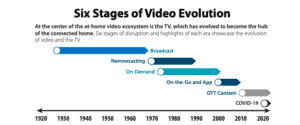Understanding your users, the only way to engage them
Understanding your users is (or should be) a major concern for any business today. Understanding your users is key to engage them. And not just the basic data such as age, gender, or country of reference. We mean the data that reveals their true personality: their tastes, consumption habits, reactions to ad campaigns and to the visual stimuli they receive on a daily basis… knowing their behavior so precisely that we are able to predict their next move. This is an important issue for any business, but in the entertainment industry, it’s crucial.
Of course, there is some debate around information gathering, especially from users, who may even feel that it’s invasive of their privacy. But the truth is, with the current advances in technology it is possible to know a user’s every action in a digital environment while at the same time preserve their anonymity. Artificial intelligence algorithms designed to generate and analyze the predictive models that will then be used to offer individual users what they see at any given moment employ user IDs that do not violate individual privacy but do allow for a uniquely personalized user experience.
Whether on a Smart TV, tablet, Roku, smartphone or making an app purchase, lots of data is generated, a lot of it simultaneously. How many of us are on our mobile phones while we have the TV on in the background, or stream a cooking video on our tablet while we prepare dinner? There’s no doubt that the way we consume content has changed dramatically, with the recent COVID lockdowns accentuating a number of trends. A recent study done by Parks Associates in collaboration with Applicaster features an interesting graph that describes the evolution of video in recent years:

This evolution should be seen as an opportunity to better understand the needs of users and to employ their data in an efficient, responsible manner so as to offer them a better experience. It’s what allows data-driven companies to offer the best option within an infinity of content in today’s market. Understanding why users subscribe to a streaming service, why they stop watching certain TV programs, what type of content really engages them, or the reasons why they may stop a subscription are questions that need clear answers when devising a marketing strategy. These answers can save a lot of time and money and increase effectiveness when combined with the right KPIs and precise segmentation, to direct the appropriate messages to the right people at the right time, thus reducing churn and increasing user engagement and retention.
This may all seem a little obvious, and yet not a lot of the companies have made the shift to a data-driven business model and fully master their user data, the metrics that really impact the performance of their advertising and promotional campaigns, and above all, the right technology to stay ahead of the needs and actions of their customers.
Without a consistent methodology to measure user behavior on different devices it is impossible to know how, when and with what type of content to engage and re-engage your audience. The challenge here is to standardize all of the data received and define the metrics that will the impact the ROI:
- Sleeping users: awake or not? Some months ago, Netflix surprised its inactive users (those who had not used the service in the last year) by telling them that their service would be automatically cancelled unless they indicated otherwise. That move was widely commented, given that services normally try not to draw the attention of users they know are not using the service but continue to pay their monthly service religiously. Whatever your business strategy, you need to be aware at all times of the users who use the service on a regular basis and those who do not.
- Limitless personalization of content: knowing how, where, when, and why your audience streams your content is yet another part of the customer picture you need to understand. Early on, streamers would typically consume content on their televisions or computer screens, but now the number of devices used to stream is huge, and so is the number of variables: type of content, user location, how they are watching, what their friends are watching, when this is happening… by knowing the consumption habits of individual users we can recommend the type of content they will want to see at any given moment. This level of personalization makes it possible to exponentially increase levels of engagement.
- Winning back potential churners before they leave: precise knowledge of our users lets us accurately predict when they are more likely to leave, so that we can reverse the situation, get them to stay and increase CLTV.
- Data is everywhere, use it smartly: The challenge that most businesses face is pulling together the data so they can start looking into a specific KPI and then frame the actions to improve it. Data is normally gathered through different channels and often it doesn’t agree from one platform to another. Solutions such as Jump Datalake make it possible to store and manage this data efficiently to then cleanse the data and work it to define the KPIs that our business needs.
At Jump we want try to make this process as easy as possible for our clients, so that they can just provide us with the data and receive the insights they need to increase the performance of their business.

